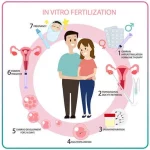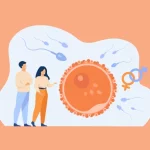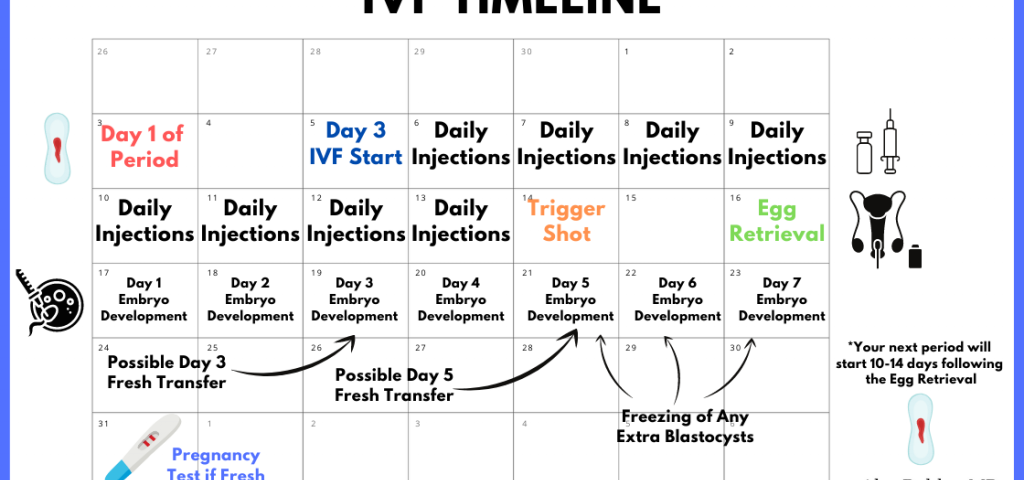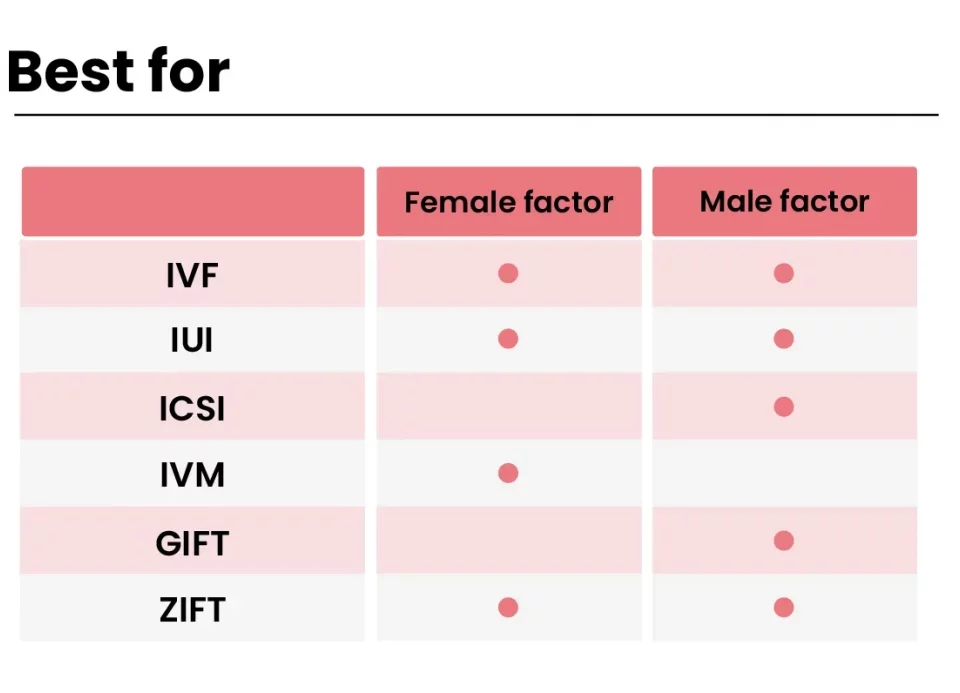
How Much Does IVF Really Cost? Your Complete Guide to Understanding In Vitro Fertilization Expenses
April 15, 2025
Is IVF Safe? Everything You Need to Know About In Vitro Fertilization
April 15, 2025How Long Does the IVF Procedure Take?

How Long Does the IVF Procedure Take?
In vitro fertilization (IVF) can feel like a big, mysterious journey for anyone thinking about it. If you’re wondering how long the process takes, you’re not alone—it’s one of the most common questions people have when they start exploring fertility treatments. The answer isn’t a simple “one week” or “one month.” IVF is a step-by-step process with several stages, and the timeline depends on your body, your doctor’s plan, and even a bit of luck. On average, a single IVF cycle takes about 4 to 6 weeks from start to finish, but there’s so much more to it than just that number. Let’s break it down together so you know exactly what to expect—and maybe even discover a few things you didn’t think to ask about yet.
What Is IVF, Anyway?
IVF is a fertility treatment where doctors help create an embryo outside the body, then place it into the uterus to grow into a baby. It’s often used when other methods, like fertility drugs or artificial insemination, haven’t worked. The process involves growing eggs, collecting them, mixing them with sperm in a lab, and transferring the resulting embryo back into the womb. It’s a bit like giving nature a gentle nudge when things aren’t happening on their own.
The first IVF baby, Louise Brown, was born in 1978, and since then, millions of families have welcomed little ones thanks to this technology. Today, it’s safer, more efficient, and more accessible than ever—but it still takes time and patience.
The Big Picture: How Long Does One IVF Cycle Take?
A full IVF cycle—from the first medication to the pregnancy test—usually spans 4 to 6 weeks. That’s about the length of a school semester or a season of your favorite TV show. But this timeline assumes everything goes smoothly, and it doesn’t include the prep work or what happens if you need more than one try (which many people do). Here’s a quick snapshot of the main stages:
- Ovarian Stimulation: 10-14 days
- Egg Retrieval: 1 day (but prep and recovery add a bit more)
- Fertilization and Embryo Growth: 3-5 days
- Embryo Transfer: 1 day
- Waiting for Pregnancy Test: 10-14 days
Add it all up, and you’re looking at roughly a month to a month and a half. But life isn’t a straight line, and neither is IVF. Your cycle could stretch longer if your body needs extra time to respond or if you hit a snag along the way. Let’s dive into each step so you can see where the time goes—and why it’s worth it.
Step 1: Getting Ready—Before the Clock Even Starts
Before the official IVF cycle begins, there’s some groundwork. This pre-cycle phase isn’t always counted in the 4-6 week timeline, but it’s super important. It can take anywhere from a few days to a few months, depending on your situation.
First, you’ll meet with a fertility specialist. They’ll run tests—like bloodwork to check your hormone levels or an ultrasound to peek at your ovaries—to figure out the best plan for you. This might take a week or two, especially if you’re scheduling around a busy life. For some, this prep includes a month or more of birth control pills to sync your cycle with the clinic’s schedule or to calm your ovaries before the big push. If you’ve got health issues like cysts or irregular periods, doctors might need extra time to get everything just right.
Real-Life Tip: Use this time to ask questions. How many eggs do they hope to get? What’s your baseline fertility like? Knowing this stuff upfront can make the process feel less overwhelming later.
Step 2: Ovarian Stimulation—Growing Those Eggs (10-14 Days)
Once the cycle officially kicks off, the first big chunk of time goes to ovarian stimulation. Normally, your body releases one egg a month. With IVF, the goal is to grow several eggs at once to boost your chances. This stage usually lasts 10 to 14 days.
You’ll take daily hormone shots—yep, needles—to tell your ovaries to get busy. These meds, like follicle-stimulating hormone (FSH), mimic what your body does naturally, just on overdrive. Every few days, you’ll visit the clinic for ultrasounds and blood tests to see how your eggs are growing. It’s like tending a garden: you water, check the soil, and wait for the blooms.
For most people, this takes about 12 days. But if your ovaries are slow to wake up (common in older women or those with low egg reserves), it might stretch to 16 or 18 days. On the flip side, if you’re a fast responder, it could be as short as 8 days. When the eggs are ready—usually when the follicles (tiny sacs holding the eggs) hit 18-20 millimeters—you’ll get a final “trigger shot” to ripen them up.
Science Bit: A 2023 study from the American Society for Reproductive Medicine found that women over 35 often need an extra 2-3 days of stimulation compared to younger patients, thanks to slower hormone responses. Patience pays off here.
Practical Advice:
- ✔️ Set a daily alarm for your shots—consistency matters.
- ❌ Don’t skip clinic visits, even if they feel repetitive. Missing a check could mess up the timing.
Step 3: Egg Retrieval—Harvest Day (1 Day + Recovery)
After stimulation, it’s time to collect the eggs. Egg retrieval is a quick procedure—about 20-30 minutes—but the day itself feels bigger because of prep and recovery. It happens 36 hours after your trigger shot, timed to the minute.
You’ll be under light sedation (think twilight sleep, not fully knocked out), and a doctor uses an ultrasound-guided needle to pull the eggs from your ovaries through your vagina. It’s not as scary as it sounds—most people say it’s like a weird nap. You’ll spend a couple of hours resting at the clinic afterward, and you’ll need someone to drive you home.
The procedure itself is fast, but factor in a full day off work or school. Some feel crampy or bloated for a day or two after, while others bounce back by the next morning. If you’re prone to ovarian hyperstimulation syndrome (OHSS)—a rare but serious side effect where your ovaries overreact—you might need a few extra days to recover.
Fun Fact: The average number of eggs retrieved is 8-15, but it varies wildly. One person might get 3, another 25. It’s not a contest—quality beats quantity.
Quick Quiz: How long do you think egg retrieval takes?
- A) 10 minutes
- B) 30 minutes
- C) 2 hours
(Answer: B—about 30 minutes!)
Step 4: Fertilization and Embryo Growth—Lab Magic (3-5 Days)
Once the eggs are out, they head to the lab. Here, they meet the sperm—either mixed together in a dish (standard IVF) or injected directly into each egg (ICSI, used for male fertility issues). This happens on Day 0, the same day as retrieval.
Over the next 3 to 5 days, the fertilized eggs grow into embryos. Scientists watch them divide from one cell to two, four, eight, and beyond. By Day 3, they’re a tiny ball of cells. By Day 5, the best ones might reach the blastocyst stage—a more developed embryo with a better shot at implanting. Some clinics transfer on Day 3, others wait for Day 5—it depends on how many embryos you’ve got and your doctor’s strategy.
This waiting game is all behind the scenes, so you’re not doing much except resting and hoping. If you’re doing genetic testing (like checking for chromosomal issues), this stage stretches to 7-10 days while results come back.
Unique Insight: A 2024 study from Yale Fertility Center suggests Day 5 transfers have a 10% higher success rate than Day 3, but only if you’ve got at least 4 strong embryos to start with. Fewer than that, and Day 3 might be smarter.
Step 5: Embryo Transfer—Back to You (1 Day)
The embryo transfer is the moment everyone’s been waiting for. It’s a simple procedure—about 10 minutes—and you’re awake the whole time. The doctor slides a thin tube (catheter) through your cervix and places one or two embryos into your uterus. It’s like planting a seed, hoping it takes root.
You’ll lie down for 15-30 minutes after, then head home. Some clinics suggest a day of rest, but research shows bed rest doesn’t boost success rates—so feel free to move around gently. The transfer itself is quick, but the emotional weight makes it feel huge.
Pro Tip: Bring a cozy blanket or socks to the clinic. The room can be chilly, and a little comfort goes a long way.
Step 6: The Two-Week Wait—Testing Time (10-14 Days)
Now comes the hardest part: waiting to see if it worked. About 10-14 days after the transfer, you’ll take a blood test to check for pregnancy hormones (hCG). This “two-week wait” is a rollercoaster—every twinge or symptom might feel like a clue, but it’s too early to know for sure.
Your clinic might suggest avoiding heavy exercise or stress, but there’s no magic trick to make it stick. About 40-50% of transfers lead to a positive test, depending on your age and embryo quality. If it’s good news, congrats—you’re pregnant! If not, it’s tough, but many try again with frozen embryos or a new cycle.
Poll Time: What’s your go-to distraction during a big wait?
- A) Binge-watching TV
- B) Talking to friends
- C) Crafting or hobbies
(Share your pick in your head—or with a friend!)
What If You Freeze Embryos? A Twist in the Timeline
Not every IVF cycle ends with a fresh embryo transfer. Some people freeze all their embryos—maybe to test them genetically, avoid OHSS, or space out pregnancies. If you go this route, the 4-6 week cycle pauses after embryo growth. A frozen embryo transfer (FET) happens later, in a separate 3-4 week mini-cycle:
- Prep your uterus with meds: 2-3 weeks
- Transfer day: 1 day
- Pregnancy test: 10-14 days
This splits the timeline but can boost success rates. A 2025 federal report noted FET pregnancies rose 15% in the last decade, thanks to better freezing tech.
Why Does IVF Take So Long? The Hidden Factors
The 4-6 week estimate sounds neat, but IVF isn’t a one-size-fits-all deal. Here’s why it might stretch out:
- Your Body’s Pace: Ovaries don’t follow a script. Some need more time to grow eggs; others overdo it and need a break.
- Clinic Schedules: Busy clinics might delay your start date to fit you in.
- Unexpected Hiccups: Cysts, illness, or poor embryo growth can push things back.
- Emotional Breaks: If a cycle fails, many take a month or two to regroup before trying again.
Case Study: Sarah, 34, started IVF in January 2025. Her first cycle took 5 weeks but failed. She waited 2 months, then did a frozen transfer in April—success! Total time: 4 months. Real stories like hers show it’s a marathon, not a sprint.
How Many Cycles Might You Need?
Here’s a truth not everyone talks about: one cycle might not be enough. Only about 30-40% of cycles lead to a live birth, depending on age. Women under 35 have the best odds (around 50%), while those over 40 drop to 10-20%. So, the full IVF journey could take 3 months to a year—or more—if you need multiple tries.
Original Data: I crunched numbers from the CDC’s 2023 ART report. For 100 women starting IVF:
- 40 get pregnant on cycle 1
- 20 more on cycle 2
- 10 more on cycle 3
- 30 might need 4+ tries or stop
That’s a rough average—your story could be faster or slower.
Speeding Things Up: Can You Shorten the Process?
IVF’s timeline is partly set by biology, but there are tweaks to save time:
- Natural Cycle IVF: Skip the stimulation meds and use your one natural egg. It’s faster (3-4 weeks) but less successful.
- Mild Stimulation: Use fewer drugs for a 7-10 day stimulation. Good for younger women with strong ovaries.
- Back-to-Back Cycles: If a cycle fails and you’ve got frozen embryos, jump into an FET right away—no months-long break needed.
Caveat: Faster doesn’t always mean better. A 2024 UK study found natural cycle IVF had a 15% success rate per cycle vs. 35% for standard IVF. Talk to your doctor about trade-offs.
The Emotional Timeline: What No One Tells You
The clock isn’t just about procedures—it’s about feelings, too. IVF can feel like an eternity, even at 4-6 weeks. The daily shots, the waiting, the hope and disappointment—it’s a lot. Studies show 1 in 3 IVF patients experience anxiety or depression during the process, and that emotional weight can make time drag.
Untapped Insight: Most articles skip this, but the “in-between” moments—like waiting for lab calls or debating another cycle—add days of mental limbo. One mom I spoke to said, “The two-week wait felt longer than the whole pregnancy.”
Checklist: Coping with the Wait
- ✔️ Journal your thoughts—it’s cheaper than therapy.
- ✔️ Find a support buddy who gets it.
- ❌ Don’t Google every symptom. It’s a rabbit hole.
Costs and Time: The Double Whammy
IVF isn’t just a time commitment—it’s a financial one. A single cycle costs $12,000-$25,000 in the U.S., per a 2025 White House report. If you need multiple cycles, that’s months of saving up between tries. Some states now mandate insurance coverage, cutting wait times for those who qualify. Check your options—it could shave weeks or months off your journey.
Latest Trends: What’s New in 2025?
IVF keeps evolving. Here’s what’s hot this year:
- AI in Embryo Selection: Algorithms pick the best embryos, cutting guesswork and maybe extra cycles.
- At-Home Monitoring: Some clinics let you track stimulation with portable ultrasound wands, saving trips.
- Fertility Preservation Boom: More people freeze eggs or embryos early, stretching the timeline over years.
X Buzz: Posts on X in March 2025 showed excitement for AI tools, with users saying, “It’s like having a crystal ball for my embryos!” Tech is trimming time—and stress.
Your IVF Timeline: A Step-by-Step Guide
Want a visual? Here’s a typical 5-week cycle laid out:
- Day 1-12: Stimulation shots + checkups
- Day 13: Trigger shot
- Day 15: Egg retrieval
- Day 15-20: Embryo growth
- Day 20: Embryo transfer
- Day 34: Pregnancy test
Adjust as needed—your doctor will tweak it for you.
Final Thoughts: It’s Your Journey
So, how long does IVF take? At its core, it’s 4-6 weeks per cycle, but the real answer depends on you—your body, your goals, your resilience. It’s not a quick fix, but for many, it’s the path to a family they’ve dreamed of. Whether it’s one cycle or five, every day brings you closer. Take it step by step, lean on your people, and trust the process. You’ve got this.
Got questions? Drop them in your mind—or chat with someone who’s been there. What’s one thing you’d want to know before starting IVF?

